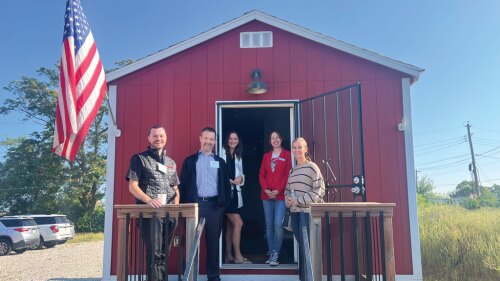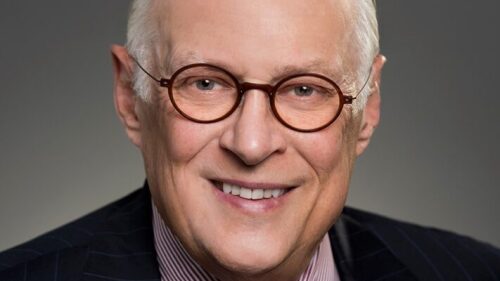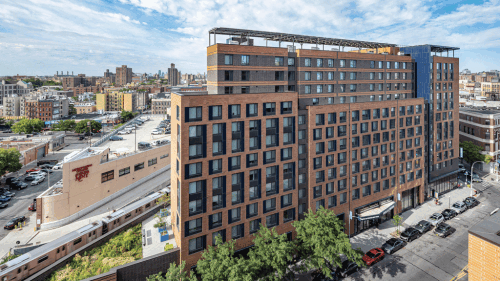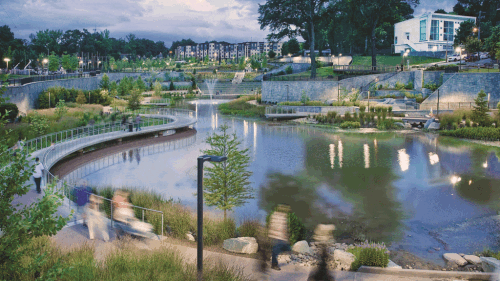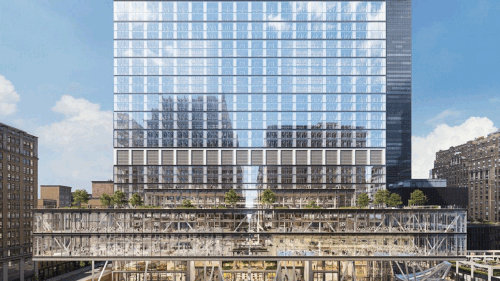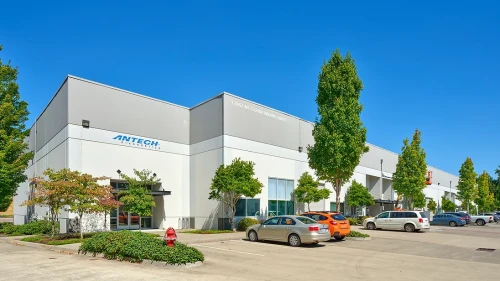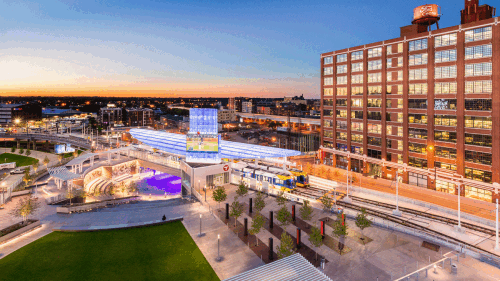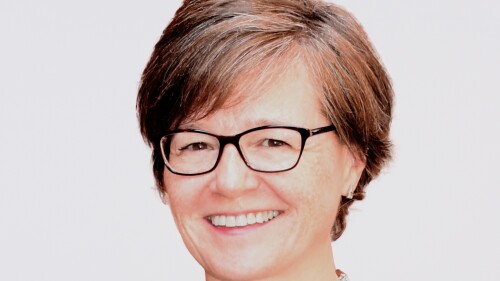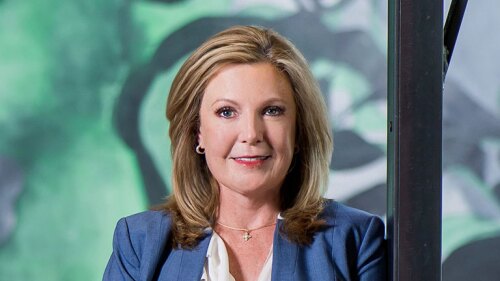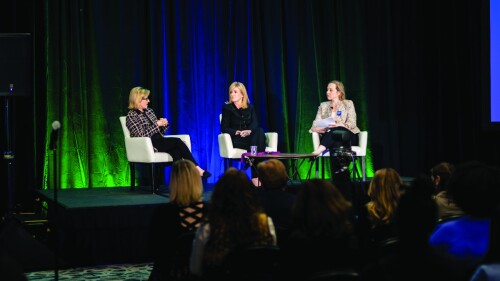Representatives from ULI Technical Assistance Efforts Share Updates on Implementation of Recommendations to Make Their Communities More Resilient
The Veterans Community Project serves any veteran who took the oath to defend the Constitution, regardless of discharge status, length of service, or branch of service. The program strikes an effective balance between community and individual dignity, employing a robust combination of housing and services. As a result, the program has a high success rate of 85 percent in transitioning unhoused veterans to permanent housing.
David R. Nelson, the influential founder and leader of a multidisciplined real estate development company and a longtime ULI member, has passed away at the age of 81.
It’s no secret that construction starts are down in the current market where higher interest rates are making it tough to pencil out new projects. But, for some developers, the bigger problem these days is sourcing equity versus debt.
ULI Spring Meeting: New York City
Tattooed, tanned, and tousled, 48-year-old Stefan Quinn Soloviev looks like an athletic nerd who stepped out of a Mad Max film, but don’t let his appearance fool you. Soloviev is one of the largest landowners in the United States—number 21, according to Landreport.com—with a portfolio that includes some of Manhattan’s most coveted properties.
Eight years ago, the landmark Paris Agreement kicked off a worldwide campaign to reduce carbon emissions. The targets set were big: slash emissions by 45 percent by 2030 and be net zero by 2050. So far, the world is not making enough progress on those lofty goals, and the progress that has been made has been very unevenly distributed. Experts from major real estate firms, including Boston Properties, CBRE, and Community Preservation Corporation, drove home the net zero transition’s importance during a panel discussion at the 2024 ULI Spring Meeting in New York City. They talked about the costs of getting to net zero, what lenders and owners are doing to get there, and the risk of not addressing climate change.
Women in leadership roles was the theme of a discussion during the 2024 ULI Spring Meeting in New York City. Kelly Nagel, who was recently named Head of Residential at EDENS, an owner and operator of mixed-use properties nationwide, hosted a fireside chat with Nancy Lashine, founder and managing partner at Park Madison Partners, a New York-based boutique advisory and capital-raising firm.
Real estate developers across the United States and around the world are under pressure to cut the amount of carbon their activities put into the atmosphere.
New Yorkers have gotten used to watching the sun set behind the piers and towers of Jersey City, the major metropolis of New Jersey’s so-called Gold Coast. But for many years, Jersey City’s glittering line of luxury apartments and office blocks stopped at the water’s edge. Tucked behind modern high-rises, the rest of the city was a patchwork of charming historic districts, aging apartment buildings, public housing, and contaminated, abandoned industrial sites.
Nationwide, the urgent need for more affordable housing has become crystal clear. The United States is grappling with a housing crisis, and building affordable housing has become increasingly difficult. Developers face high construction costs, ongoing supply chain issues, and skyrocketing prices for land, especially in some of the country’s largest cities. Even when a project comes together and gets financing, the process to obtain permitting, gain city approvals, and actually construct a project can take years.
Construction codes are pushing new buildings toward net zero, but roughly 80 percent of the expected 2050 building stock already exists today and needs to undertake major upgrades to meet emissions limits in line with the Paris Agreement. To address this issue, cities and states across the U.S. have started to limit emissions from existing buildings with regulations known as Building Performance Standards (BPS).
City is actively working to make its neighborhoods safer and more resilient to extreme rain events
One of New York City’s busiest corridors is set for one of its biggest transformations in years. The area around Manhattan’s Penn Station has long been considered a sore spot for the city, as top-tier retail stores moved to more flourishing areas and local buildings became outdated. But now, with a billion-dollar plan by a New York state agency underway to revitalize public transit infrastructure in and around Penn Station, there is serious momentum for the Midtown neighborhood, which has stalled in growth as surrounding neighborhoods have evolved.
The Manhattan office market is beginning to make a comeback, but much has changed since the start of the COVID-19 pandemic. The persistence of hybrid and remote work have changed the equation for commercial rentals, both in terms of landlord-tenant relationships and the quality of office product on offer.
In a general session at the 2024 ULI Spring Meeting, former U.S. Secretary of State Hillary Rodham Clinton spoke with Ralph Rosenberg, a partner and global head of real estate with KKR. Clinton, who now teaches at Columbia University, focused her remarks on what she said are the three major conflicts affecting the global economy.
Best Practices
A team from ESSEC Business School in France has been named the winner in this year’s prestigious ULI Hines Student Competition – Europe. The results were announced by ULI and Hines, the global real estate investor, developer, and property manager, following the final of the fifth annual pan-European competition for integrated and multidisciplinary urban regeneration.
Developers of middle-income projects can’t use subsidy programs such as federal low-income housing tax credits (LIHTCs) to finance their plans. Middle-income developments also often don’t earn enough in rent to support conventional construction loans or attract equity investors.
Federal funding opportunities through the Bipartisan Infrastructure Law (BIL) and Inflation Reduction Act (IRA) are supporting essential investments in green and resilient infrastructure, with the potential to create more livable communities while also supporting successful real estate developments through enhanced aesthetics, improved building user experiences, and operational efficiencies.
In Depth
The implications of climate change are becoming hard to ignore. The frequency of natural disasters has increased significantly in recent years, with the United States experiencing an average cost of $18 billion–plus from climate disasters per year. As these kinds of events have grown more common, calculating climate risk has become a hugely important task for commercial property owners. The topic was the main theme during a panel discussion at the April 2024 Resilience Summit in New York City.
New Yorkers have gotten used to watching the sun set behind the piers and towers of Jersey City, the major metropolis of New Jersey’s so-called Gold Coast. But for many years, Jersey City’s glittering line of luxury apartments and office blocks stopped at the water’s edge. Tucked behind modern high-rises, the rest of the city was a patchwork of charming historic districts, aging apartment buildings, public housing, and contaminated, abandoned industrial sites.
Demand for industrial space has pushed vacancies to historically low levels. But the high tide may no longer be lifting all boats. A surge in new supply along with a growing appetite for more modern facilities is putting more pressure on the sector’s aging building stock. Legacy buildings are having a tougher time keeping up with the changing demands of today’s space users.
As the recent cultural and real estate realignment called “The Great Mall Sorting” continues, A-plus malls are thriving, while the B and C properties are gradually being repurposed, reused, and completely rethought, according to architect Sean Slater, senior principal at the architectural firm RDC in San Diego.
Potential trouble brewing in a sector that has been viewed as relatively bulletproof multifamily sector is concerning. But while stress is very much real, industry participants are quick to point out that the overall foundation for multifamily remains strong. “The cracks that we’re seeing are not structural; they’re superficial,” says Vincent DiSalvo, chief investment officer at Kingbird Investment Management, a family office investment firm specializing in multifamily.
Industry Voices
Under the leadership of Chief Investment Officer Wes Fuller, Greystar, a vertically integrated real estate firm that owns, operates, and develops multifamily, student, and senior housing, began investing in international markets in 2013, including in Europe, Asia, and South America. The company’s robust institutional investment management platform now has a global presence in 249 markets.
In the first quarter of the year, we saw a palatable increase in financing requests from a variety of sponsors providing some optimism that real estate activity may be picking up. And while very few could be categorized as “good news” transactions, the vast majority were clearly indicative of what we are seeing in the market.
Over the last decade, real estate leaders have started to wrap the industry’s arms around what climate change—and the energy transition associated with it—means for the industry. Real estate companies with net zero commitments now account for nearly $1 trillion in market capitalization—well over half of the market cap of all publicly traded REITs. But setting targets is just the start. We’re learning a lot from those leaders moving beyond commitments to the hard work of transforming physical assets.
Experts say the real estate market in our cities is responding to the dramatic changes caused by COVID with a “flight to quality.” This headline suggests optimism that a safe harbor still exists out there as does the fear that we all need to act fast and run (for our lives) before things get bad. It reflects a winnowing to the essential characteristics that can ensure the best overall return and insulate us from the changing winds in the economy.
How we use words is important. Words can describe both racial inequities and the efforts to remedy them. As the real estate industry continues the work to dismantle systemic racism, it’s critical to be intentional about language.
Women in Leadership
Urban Land is spotlighting some trailblazing women in commercial real estate, all of whom are members of the ULI Women’s Leadership Initiative. Emma West, partner at Toronto-based Bousfields Inc., says it was the women who were part of the WLI Toronto Committee when she first joined who were instrumental in her professional development.
The number of women who have joined ULI has more than doubled in recent years, from 20 percent of ULI’s nearly 28,000 members to more than 13,000 female members, which equates to 29 percent of the organization’s 45,000 members. In celebration of this growth, Urban Land is spotlighting some trailblazing women in commercial real estate, all of whom are members of the ULI Women’s Leadership Initiative. Julie Smith, chief administrative officer at Maryland-based Bozzuto and a former ULI District Council Leader, is among them.
Paris mayor Anne Hidalgo, known for reinventing Paris as a 15-minute city, to receive the prestigious ULI Prize for Visionaries in Urban Development.
Philanthropy
Whether they are increasing representation of women in the real estate industry, educating students and public officials about development, or helping local communities find solutions to their infrastructure needs, the programs that donors support by contributing to the ULI Foundation have a powerful impact.
John Porter, president of Charter Properties, and his wife, Ann, have committed to continue funding the Etkin Scholars Program in Charlotte, North Carolina, thus extending a national scholarship program that Bruce Etkin, former chairman of Etkin Johnson Real Estate Partners, established in 2021 with a $1 million gift. The Porters’ donation helps fulfill Etkin’s vision that other ULI members would be inspired to continue and expand the program.
The ULI Foundation Honor Roll recognizes donors based upon their cumulative lifetime giving. The ULI Foundation’s recognition societies honor and thank members and friends who have committed to supporting the Urban Land Institute generously and consistently.


